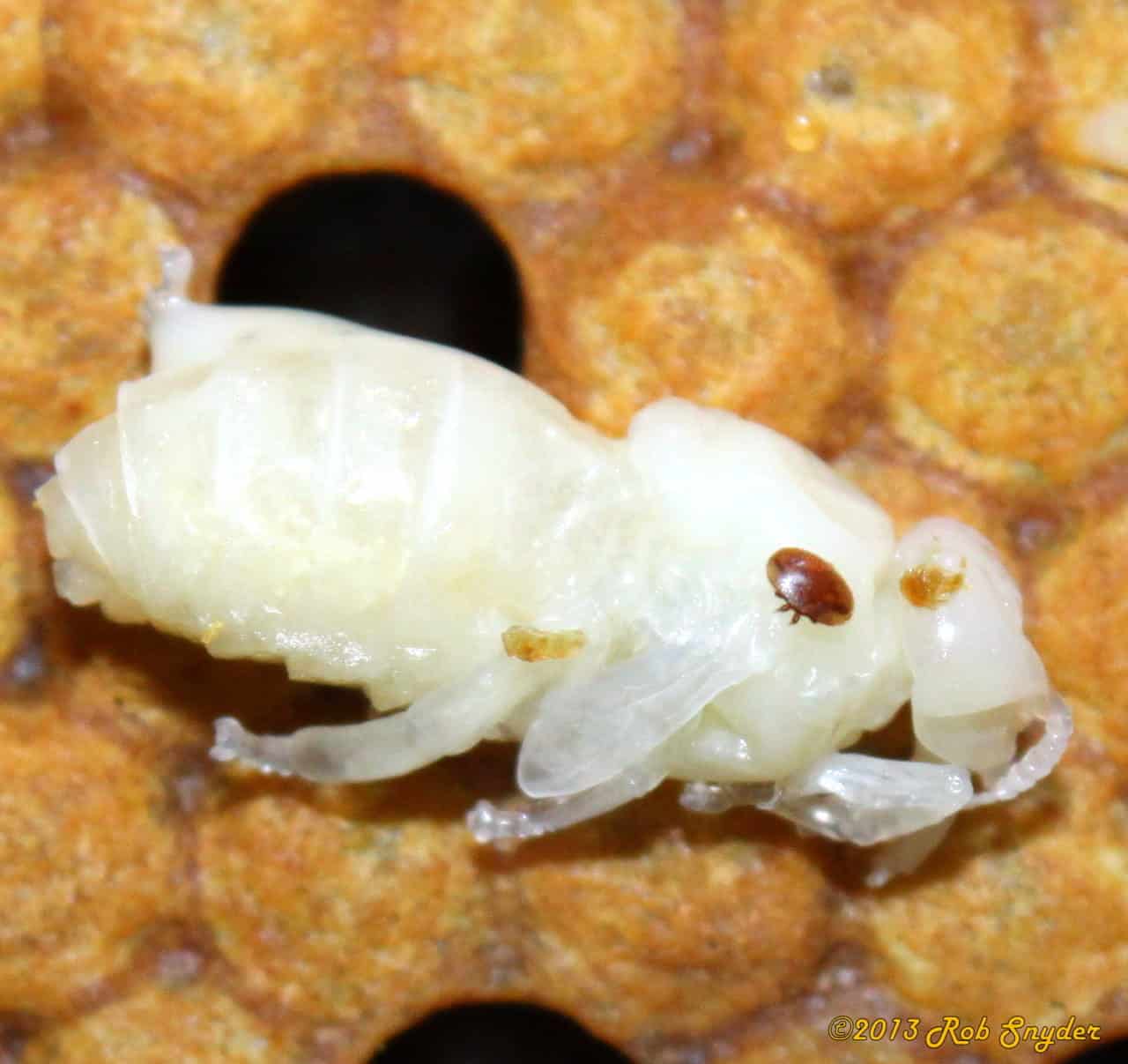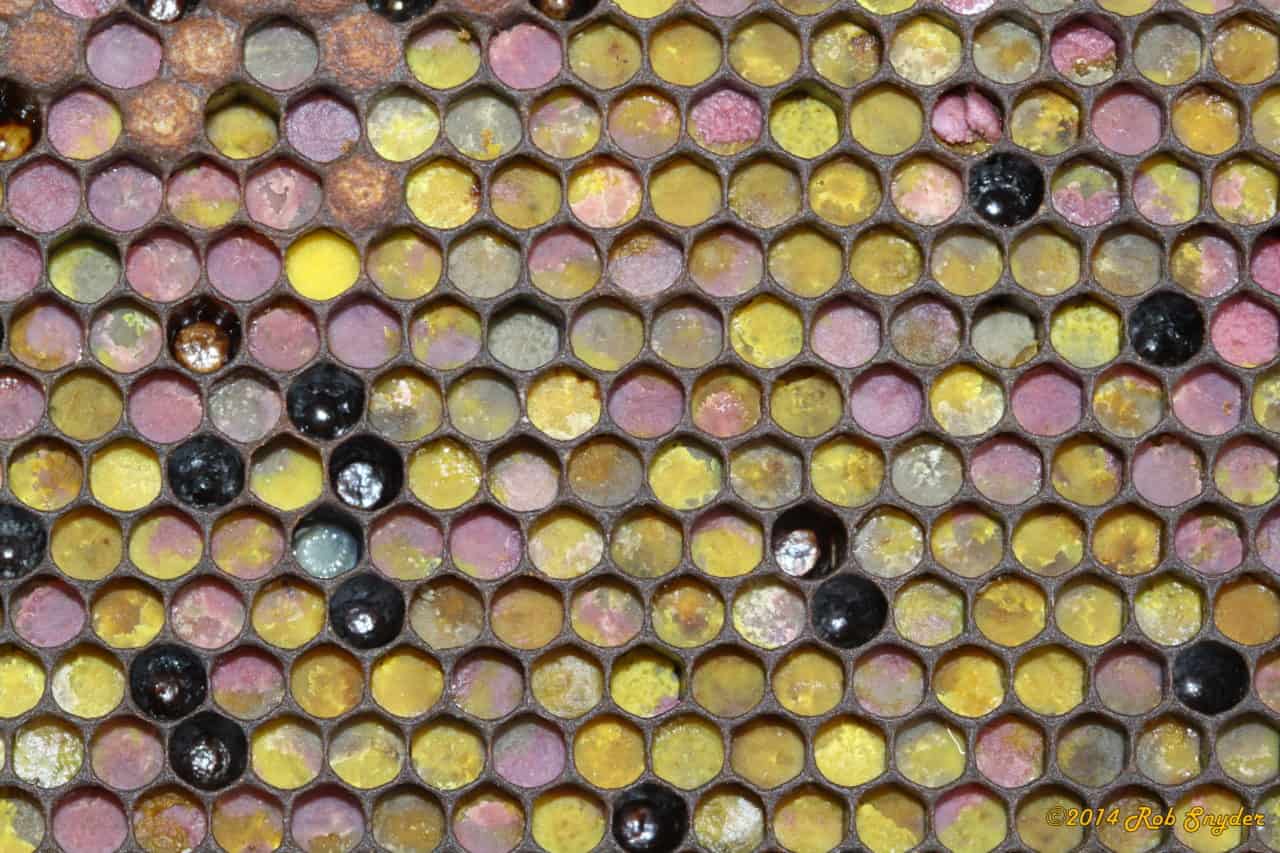Want to Help Honey Bees? DONATE! Help us expand the Bee Tech Team program to improve honey bee health and safeguard the food supply. WE NEED YOUR HELP. The success of the Bee Tech Team program has created demands beyond the scope of our existing funds. To scale our impact, we’re launching a campaign to raise 50K, a small portion of those funds. Help our campaign by donating funds and sharing our ask with others. ENGAGE. Help us spread the word by agreeing to share our campaign with your network. AMPLIFY. Provide a grant and/or matching funds to ensure the campaign’s success. HOW DO BEE TECH…
Category: Tech Teams
Bee Informed Partnership Diagnosis and treatment of Common Honey Bee Diseases Wins Bronze!
At Apimondia this year our training manual for ‘Common honey bee diseases’ was submitted in the book category. This simple training manual was entered among many other highly competitive books and won a bronze award to our surprise! I originally wanted to create a honey bee disease/diagnosis manual because most of the literature had very small, poor quality photos which made disease identification difficult. So for the past 7 years I had been collecting images of the various bee diseases and pests I came across during colony inspections in Pennsylvania as well as in migratory operations around the country. In 2011, I moved to Northern…
Variable Efficacy of Mite Treatments?
Variable efficacy of mite treatments has been a constant battle for beekeepers in the past 28 years. However, there are some things we can do in the colony to increase a treatment’s efficacy. Many treatments available to beekeepers are spread through the hive by the bees and also by the bees fanning and ventilating the hive. This ventilation is a crucial part of the hive as a whole since pheromones are spread through the hive via ventilation and traffic from worker, queen and drone bees. Through my experience, and especially over the past 8 years, I have noticed many different types of beekeepers: there are…
Spring in California 2014
The most opportune time for honey bee colonies in most areas of the U.S. is during spring build-up. The surplus of pollen and nectar that usually accompanies spring allows a growing colony to create a surplus of pollen and honey. It is also a time of year where the colony is trying to work through its kinks and get the colonies population dynamics under control as far as nurse bee to worker ratio. This ratio is crucial for hive ventilation and keeping moisture and bacteria from infiltrating the hive and causing problems. Some diseases that arise during this opportunistic time period are Chalkbrood, AFB, EFB…
Greetings from NorCal!
Hi everyone! I am the newest member of the Northern California Tech Transfer Team, and I'd like to take this opportunity to introduce myself and say I'm very excited to be part of the Bee Informed Partnership! I've only been here in the Chico/Oroville area for a couple weeks but have already learned a lot from being out in the field with some of the local beekeepers and fellow Bee Team member Rob Snyder. Being a native Midwesterner, it is fascinating to be in a completely different region of the country and seeing the bees (and beekeepers!) adapt to the environment here. Even though the grassy hillsides look somewhat dried out and barren…
South Florida Bee College
Hi everybody, My name is Liana Teigen and I recently joined BIP to be a part of the FL/GA tech team. I am based out of the Honey Bee Research and Extension Lab (HBREL) at the University of Florida in Gainesville where I’ve had the pleasure to work with Jamie Ellis for the past several years on everything bees from Varroa research to native bee conservation. For the most part I’ve worked on sustaining native bee populations for crop pollination and while I run my own bees on the side, I am thrilled to get back to honey bees full time! HBREL is primarily an extension…
Spring Sampling in Northern California 2013
Sampling large numbers of beekeepers takes considerable behind-the-scenes planning and work and this aspect of the project usually goes unseen and is underappreciated. I want to shed some light on what we all do to prepare for a hectic and fast-paced sampling season. Our spring sampling kits arrived from the east coast in several boxes. Team member Karen Roccasecca in Pennsylvania put the kits together consisting of a labeled alcohol bottle and virus sample bottle in individual bags. The individual bags contain both bottles and were grouped in 12 then placed into larger bags and eventually boxed. She then shipped them to our team at…
How are your bees?
Most of the commercial beekeepers in the Midwest move their colonies to southern locations for the winter, primarily to California for the pollination of almonds. I get to go where the bees go. I spent the last couple of weeks sampling beekeeper sin the San Joaquin valley in California. Beekeepers from across the nation truck bees to California to place them in the almond orchards. Just driving around, you can see all sorts of bee trucks. Most often, the truck drivers will unload in holding yards or staging yards where the colonies will wait until placement in the almond orchards. I attended meetings held by…
Flora at Joshua Tree National Park
Some of my favorite memories of the great outdoors in 2012 include sunny days spent in Joshua Tree National Park last November. Having never been, I was amazed at the diversity of plants to be seen. Situated in both the Mojave and Colorado Deserts, the park has a multitude of cacti and shrubs as well as some junipers and oaks at higher elevations. The desert shrubs have really grown on me as, in addition to their varied appearances and the stunning habitats in which they are found, they also have excellent names. For example, Ocotillo, the common name for Fouquieria splendens, just rolls off the tongue.…
Spring Sampling Season
Our spring sampling season is almost finished (in Northern CA, spring starts in January - coming from the Midwest, I initially found that very confusing) . It has been a marathon to try and get all the bees sampled before the queen breeding season starts. We've been sampling colonies for Varroa, Nosema, viruses, and hygienic behavior that the beekeepers picked out as potential queen mother colonies. The data is only really useful if they get it prior to the start of their grafting, so we have been working pretty much non-stop since the end of January to get the information to them in time. We…

